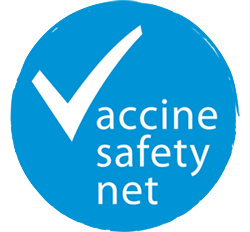Prevention is the Best Medicine: The Importance of Immunization to the Health of Seniors
 On Tuesday 27 November 2018, health care professionals, public health officials, stakeholders in ageing, immunization and lung conditions, and interested members of the public gathered in Toronto to learn about the importance of immunization to the health of seniors at the fourth Breathing Policy Forum organized by the Ontario Lung Association, in partnership with the National Institute on Aging.
On Tuesday 27 November 2018, health care professionals, public health officials, stakeholders in ageing, immunization and lung conditions, and interested members of the public gathered in Toronto to learn about the importance of immunization to the health of seniors at the fourth Breathing Policy Forum organized by the Ontario Lung Association, in partnership with the National Institute on Aging.
The morning event consisted of six key speakers:
- George Habib, President and CEO of The Ontario Lung Association;
- Bev Black, Patient Advocate for the Ontario the Lung Association;
- Dawn Bowdish, Associate Professor of Pathology and Molecular Medicine at McMaster University;
- Natasha Crowcroft, Chief of Applied immunization Research & Evaluation at Public Health Ontario;
- Allison McGreer, Microbiologist and Infectious Disease Consultant at Mount Sinai Hospital and University Health Network;
- Samir Sinha, Director of Geriatrics at Sinai Health System and University Health Network
The event was both educational and motivational – outlining the importance of vaccination to older people, the worrying adult vaccination uptake rates in Canada, and potential collaborative solutions to this problem.
The Importance of Vaccination
Vaccine preventable diseases in later life such as influenza, pneumonia and shingles can result in severe complications and even mortality, particularly for older people with comorbid chronic diseases such as diabetes, cardiovascular disease, and dementia, Dr. Bowdish explained.
Combined, influenza and pneumonia are the 7th leading cause of death in Canada, yet people underestimate the consequences of this life-threatening illness. In sum, “vaccines save lives” said Dr. Crowcroft, and the burden of infectious disease on older adults is not only death, but years of functional ability lost as well.
Vaccination Uptake Rates in Canada
Immunization rates have shown success in Canadian children, so why are adult vaccination rates so low? Put simply, there is not the same driving force. Dr. Sinha explained that there are 10 times as many pediatricians in Canada as there are geriatricians, yet the number of Canadians aged 65 and older is now equal to the number of children aged 15 and younger.
Pneumococcal vaccination is a straightforward process, only requiring one dosage in Canada, yet uptake rates are extremely low (around 40%), compared to the 80% target for people aged 65 and older. Flu vaccination uptake rates are higher, yet still well below the target. Surprisingly, a large percentage of older Canadians who consider themselves at-risk for flu still choose not to get vaccinated.
The Solution?
The speakers discussed a variety of opportunities to increase uptake rates, including incentives for physicians (noting the high vaccination rates in Nova Scotia which may be due to this); education to medical students; the need for simple and clear vaccine recommendations; vaccination of physicians to better enable them to encourage and recommend vaccines to their patients; and the need for a whole family perspective, with attention to maintaining health among the entire family, from children, to pregnant family members, to grandparents.
“We don’t spend nearly enough time thinking about prevention” said Dr. McGreer. There is a systematic double standard when comparing stakeholders who are willing to pay for treatment versus what they are willing to pay for prevention.
Dr. Crowcroft explained that people automatically think “risk” when vaccines are discussed. The narrative surrounding vaccines needs to change to capture the ability of vaccines to work with a person’s immune system to help their body help itself – “trying to help nature help you”.






